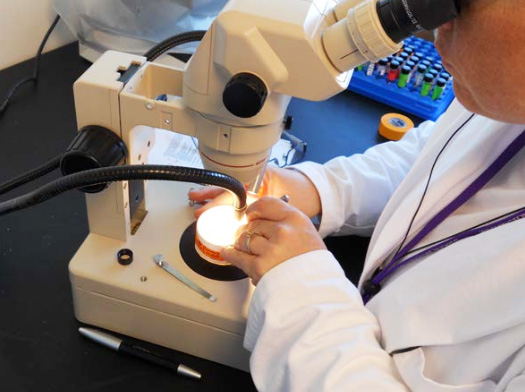Microplastics are raining down on national parks and other protected areas in the western United States at the rate of about 132 pieces of microplastic per square meter every day, according to a report in the journal Science (June 2020). Microplastics are plastic particles measuring less than five millimeters (approximately 0.2 inches) in length. The reported precipitation rate is similar to dumping about 300 million pulverized plastic water bottles (about 1000 tons) over the studied areas each year. Where do these particles come from? Sources mostly include fragments from virgin plastic pellets, polymer textile fibers, microbeads from personal care products and spray paints, as well as environmental degradation of waste plastic into smaller and smaller pieces over time. See also: Manufactured fiber; Paint and coatings; Plastic waste pollution; Polymer; Textile

According to researchers, microplastics are transported and deposited onto Earth’s surface by wind and rain. Sampling results for wind and rain deposition indicate that about 75 percent of the microplastics originated from dry air. Microplastics transported by dry air tended to be smaller in size and may have come from long distances. In contrast, microplastics deposited by rain appear to be larger in size and to have come from storms that passed over large cities nearby. See also: Atmospheric general circulation; Precipitation (meteorology); Wind
After atmospheric microplastics are transported long distances, the particles can make their way into food chains and food webs. Plastics can affect soils’ heat-absorbing and hydrologic properties, microbiology, and cycling of nutrients between organisms and their environment. As a result, ecosystems are being affected worldwide. In the long term, microplastic deposition in wilderness areas could affect biodiversity due to physical (e.g., intestinal blockages) and toxicological harm caused by ingesting microplastics. Because so little is known about atmospheric microplastic deposition and ecological consequences are so potentially damaging, further studies are needed to better understand how microplastics enter the atmosphere and what their long-term effects on ecosystems may be. See also: Biodiversity; Ecology; Food web; Hydrology; Soil degradation; Soil ecology; Soil microbiology





